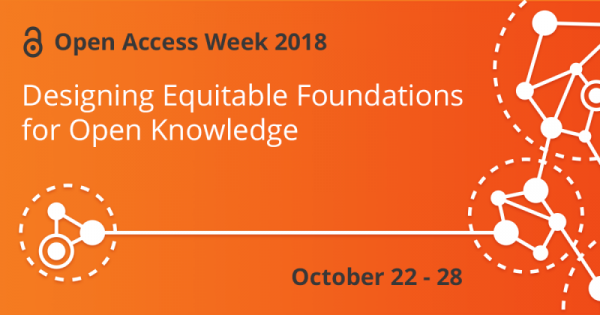
October 26, 2018, by Julie Baldwin
Open Access Week 2018: Publishing open research data
Holly Ranger, Research Librarian for Research Data Management, explores open data…
When people think about ‘open access’ they tend to think about open access journal publications – but open data publication is an increasingly important part of open access to scholarly outputs. So what is open data?
In the UK, EU, and internationally, there is an increasing commitment towards transparency and reproducibility. That is, a commitment to the principles that publicly-funded research should be made publicly available, and that research data underpinning scholarly publications should be made openly and freely available for other scholars and the public to view, validate, and re-use (providing the dataset is correctly attributed to its author and is not exploited for commercial gain). Greater transparency means that it’s easier for research to advance – data produced in the course of the research is made available for other researchers to discover, examine, and build upon, and open data helps avoid duplication of research. The UKRI Concordat on Open Research Data also states that the increased transparency and scrutiny enabled by open data drives up research quality, facilitates innovation, and safeguards good research practice.
As a result, many research funders and publishers now encourage or even mandate researchers to make their data publicly available at the same time as they submit an article for publication (you can view different UK funders’ expectations around the open publication and sharing of research data here). Data can comprise anything and everything from reference lists to genomic sequences. Publishing data is already standard practice in disciplines such as biology and astrophysics, but anticipated changes to the REF requirements around open access and the open research environment are likely to push through this practice across all disciplines over the next seven to ten years.
Beyond simple compliance and the transparency agenda, however, there are many benefits to publishing your research data:
- it ensures that you receive credit for the work that goes on ‘behind the scenes’ of a research paper as a valid research output – you are allocated a permanent, citable Digital Object Identifier for your dataset;
- it provides greater visibility to your research, breaking down barriers to international, interdisciplinary, and ‘citizen science’ collaborations;
- and it has the potential to increase the impact of your research – articles with datasets published alongside them have more citations and go through the peer-review process faster than articles without datasets.
To find out more information and to access our new guidance on publishing your data, visit our Sharepoint site.
This blog is one of a series we’re running during Open Access Week 2018, you’ll find more blogs on other open access topics here.
No comments yet, fill out a comment to be the first

Leave a Reply